
The Pacific Mail Steamship Company was a pioneering shipping line that played a significant role in the development of the United States' west coast. It was founded in 1848 by Asa and Knapp, two entrepreneurs who saw an opportunity to provide a reliable transportation service to the region.
The company's early years were marked by a series of challenges, including financial struggles and competition from other shipping lines. However, the Pacific Mail Steamship Company persevered and eventually established itself as a major player in the industry.
History of PMS
The Pacific Mail Steamship Company has a rich and fascinating history that spans over a century. The company was established in 1848 to carry US mail on the Pacific leg of a transcontinental route via Panama.
The federal government played a significant role in the company's founding, discussing the possibility of creating subsidies for a private shipping company similar to the model already established in Britain. This policy served the larger objective of annexing and developing Oregon.
The company's first contract was awarded to Arnold Harris, a straw buyer from Arkansas, who then assigned it to William H. Aspinwall, a partner in the company. Aspinwall brought in three partners, Edwin Bartlett, Henry Chauncey, and Gardiner Greene Howland, who incorporated the Pacific Mail Steamship Company on April 12, 1848, with a capital stock of $500,000.
In 1867, the company launched the first regularly scheduled trans-Pacific steamship service with a route between San Francisco, Hong Kong, and Yokohama, and extended service to Shanghai. This route led to an influx of Japanese and Chinese immigrants, bringing additional cultural diversity to California.
The company's ships were not only used for mail service but also played a role in times of war. The federal enabling legislation of 1845 vested authority of mail contracts with the Secretary of the US Navy, who oversaw the construction of the steamers to ensure they could be easily converted to warships.
Here are some key dates in the company's history:
- 1846: President James K. Polk brings the Oregon Territory into the Union.
- 1847: Congress passes laws approving funding for four naval steamers and directing the US Department of the Navy to supervise their construction.
- April 12, 1848: The Pacific Mail Steamship Company is incorporated.
- 1867: The company launches the first regularly scheduled trans-Pacific steamship service.
- 1869: The Central Pacific and Union Pacific railroads meet in Utah, marking the end of the Pacific Mail's profitability on the Panama to San Francisco route.
PMS Timeline
The Pacific Mail Steamship Company had a fascinating history. In 1850, the company established a steamship line competing with the U.S. Mail Steamship Company between New York City and Chagres.
This rivalry was short-lived, as the U.S. Mail Steamship Company purchased Pacific Mail steamers on the Atlantic side in April 1851. George Law sold his new company and its ships to the Pacific Mail, ending the competition.
During the American Civil War, Pacific Mail steamers carried gold and silver from western mines to the eastern states. The Confederate Navy posed a threat to these ships, prompting General McDowell to order passengers to surrender all weapons upon boarding and to search every passenger and their baggage.
In 1925, the company was purchased by Robert Dollar of the Dollar Steamship Company. This marked a significant change in the company's ownership, but it wouldn't be the last.
A different take: England Ships
1850–1869
In 1850, the Pacific Mail Steamship Company established a steamship line competing with the U.S. Mail Steamship Company between New York City and Chagres.
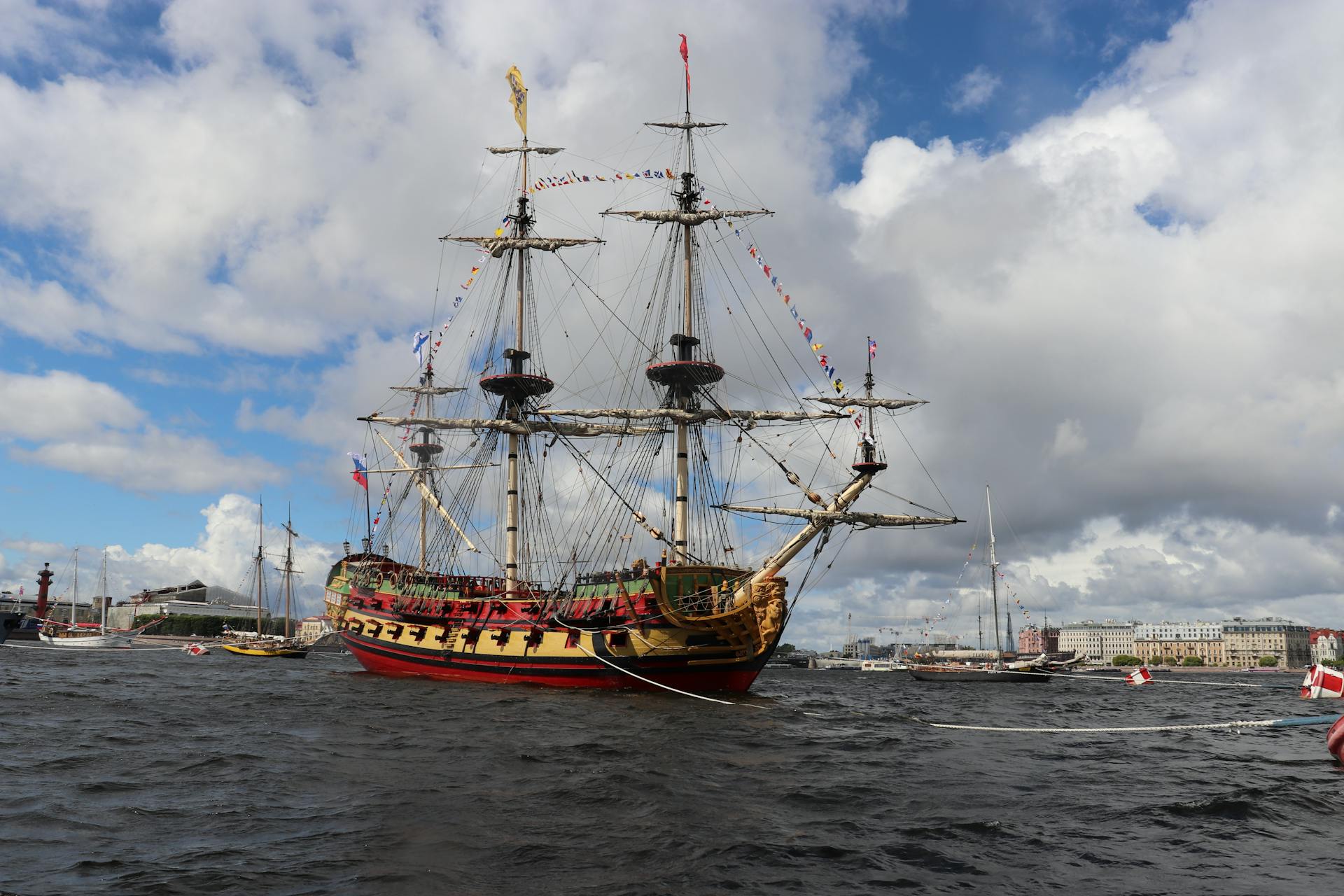
The company's rivalry with the U.S. Mail Steamship Company was ended in April 1851 when the latter purchased Pacific Mail steamers on the Atlantic side.
George Law sold his new company and its ships to the Pacific Mail, marking the end of the rivalry.
The SS Winfield Scott, acquired when the New York and California Steamship Company went out of business, ran aground on Anacapa Island in 1853.
Marshall Owen Roberts purchased Law's interest and became president of Pacific Mail in 1854.
During the American Civil War, the ships of the Pacific Mail carried the gold and silver of the western mines to the eastern states, but were under threat from the Confederate Navy in the form of commerce raiders.
General McDowell ordered each passenger on board American merchant steamers to surrender all weapons when boarding the ship and every passenger and his baggage was searched.
Detachments of Union soldiers sailed with Pacific Mail steamers to provide protection from Confederate threats.
For more insights, see: Baltimore Inner Harbor Ships
1870-1949
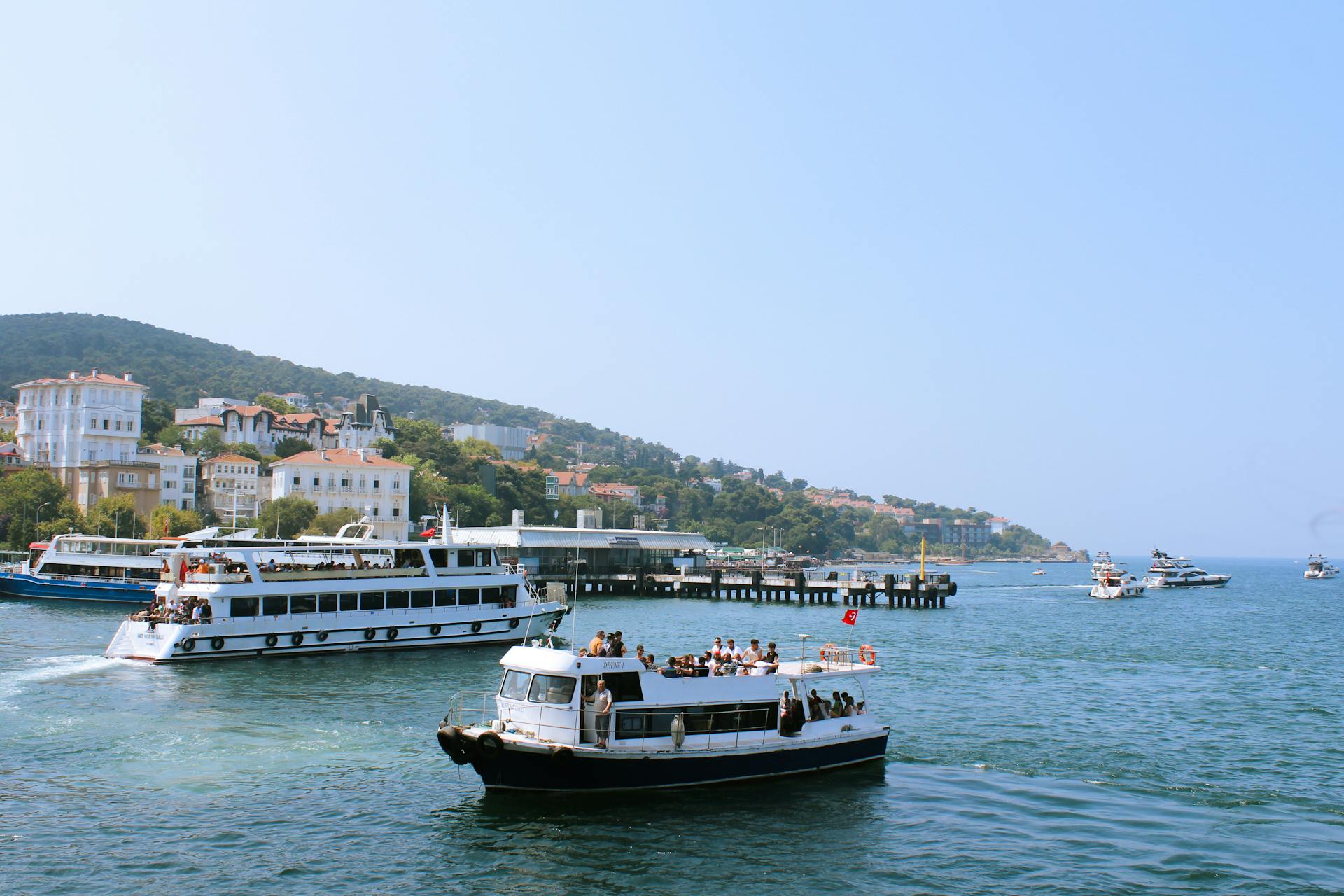
In 1925, the company was purchased by Robert Dollar, of the Dollar Steamship Company. This marked a significant change in ownership for the company.
The government bail-out of the Dollar Line in 1938 led to American President Lines taking ownership of the company. By this time, PMSS essentially existed only on paper.
The company was formally closed down in 1949, after just over a century of existence.
For your interest: Robert Dollar
PMS Ships and Operations
The Pacific Mail Steamship Company had a fleet of ships that played a crucial role in its operations. Their ships were a mix of steamships and sailing vessels, with some being specifically designed for cargo and others for passenger transport.
One of the most notable ships in the PMS fleet was the SS Great Republic, which was the largest passenger steamship in the world at the time. It was a behemoth of a ship, measuring over 440 feet in length.
The SS Great Republic was not only impressive in size but also in its capabilities, with a top speed of over 16 knots and a capacity to carry over 3,000 tons of cargo. It was a game-changer in the shipping industry, setting new standards for passenger and cargo transport.
The PMS fleet operated on several routes, including the transpacific route between San Francisco and Hong Kong, which was a major trade route at the time. The ships would often stop at various ports along the way, including Honolulu and Yokohama.
Explore further: Chu Kong Passenger Transport
Finding Aid MssPacmail

The Pacific Mail Steamship Company's records are preserved in the Finding Aid MssPacmail, a valuable resource for researchers.
This finding aid provides a comprehensive guide to the company's archives, including over 1,000 cubic feet of records.
The collection spans from 1848 to 1949, covering the company's entire operational period.
It includes letters, receipts, and other documents related to the company's business activities.
These records offer a unique glimpse into the company's daily operations, financial dealings, and interactions with customers and employees.
The MssPacmail finding aid is organized chronologically, with documents grouped by date and type.
Researchers can use this guide to locate specific records and gain a deeper understanding of the company's history.
The finding aid is available online, making it easily accessible to researchers worldwide.
For your interest: Diamond S Shipping Group Inc.
PMS Challenges and Innovations
The Pacific Mail Steamship Company faced significant challenges in managing their mail service, particularly during the 19th century.
One major challenge was the lack of a standard system for tracking and managing mail, which led to delays and losses.
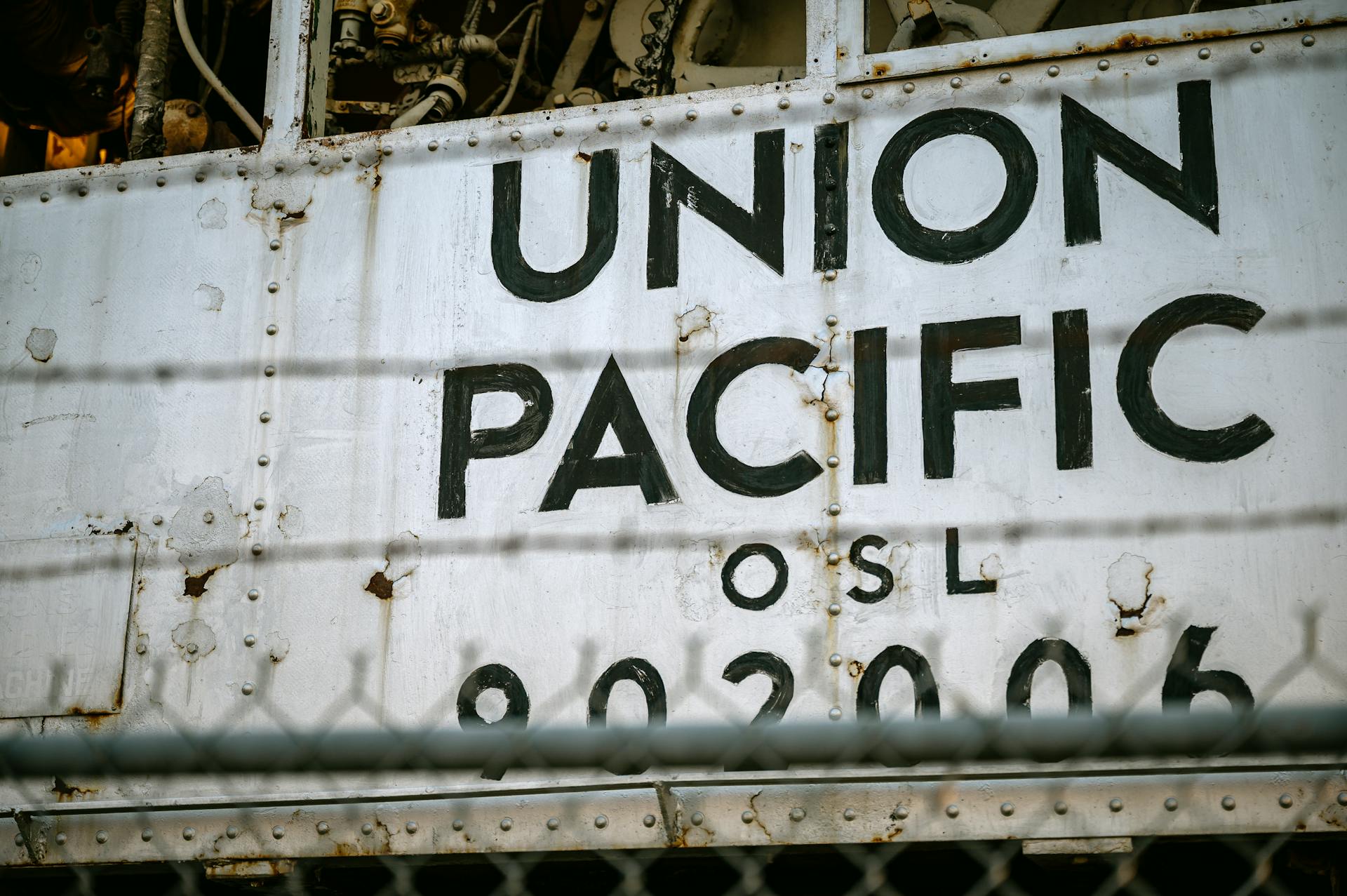
The company responded to this challenge by implementing a more efficient system, but the exact details of this innovation are not specified in the article.
Despite these challenges, the Pacific Mail Steamship Company remained a major player in the mail service industry, operating a large fleet of ships and offering a range of services to customers.
Corporate Infighting
Corporate infighting was a major challenge for the Pacific Mail Steamship Company in the mid-1800s. The company was controlled by the Brown Brothers firm, which had a significant interest in the company's operations.
In 1864, Brown Brothers purchased 10,000 shares of Pacific Mail stock, giving them a controlling interest in the company. This move was part of a larger effort to establish a shareholding body with permanent interests, uninfluenced by market fluctuations.
The Brown Brothers firm was accused of operating the business for their own gain, rather than for the benefit of the company as a whole. This was evident in the company's decision to build inefficient and expensive side-wheel-propelled ships, despite the fact that screw propellers had become the standard in the industry.
Discover more: Lykes Brothers Steamship Company
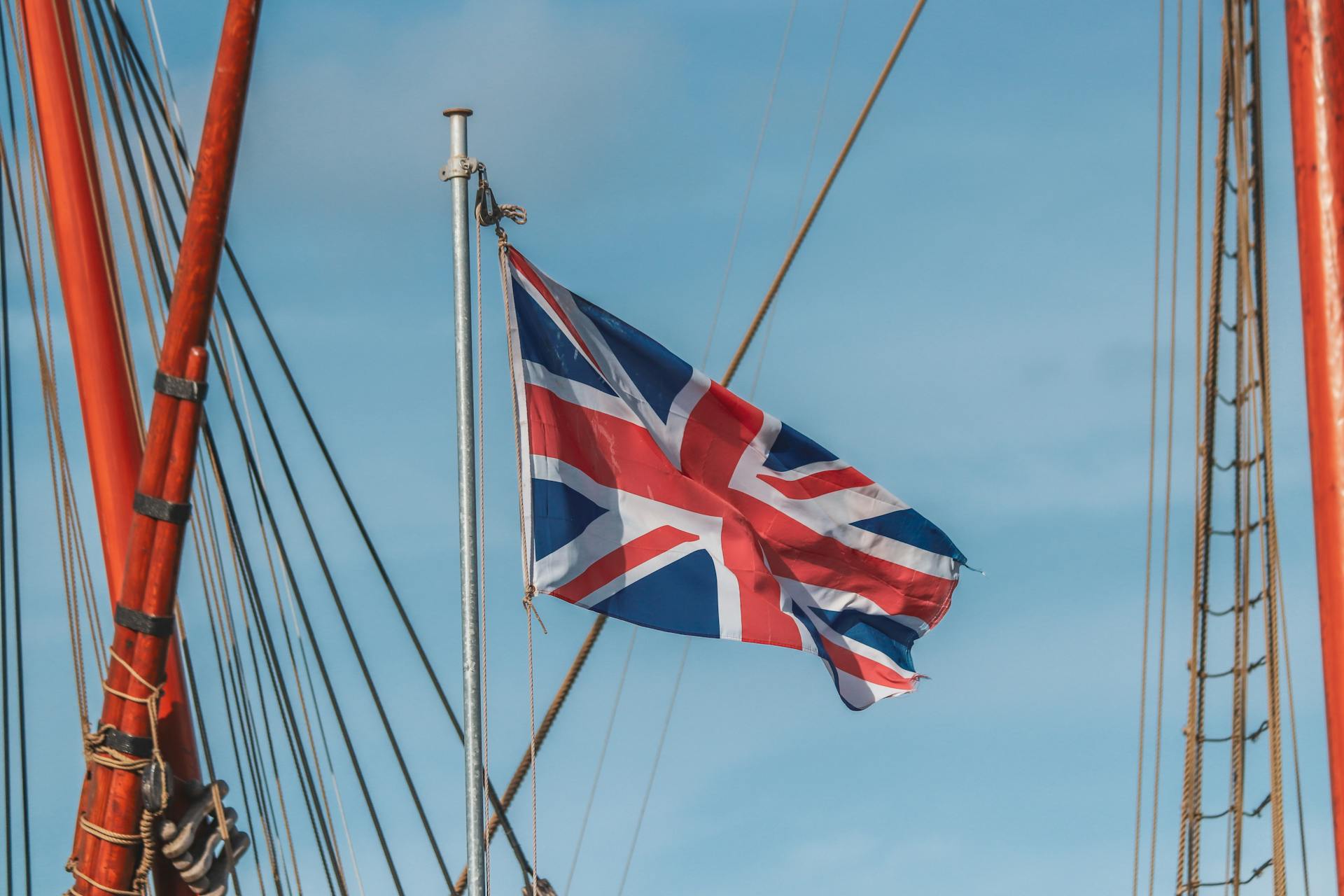
The Brown Brothers firm also had a controlling interest in the Novelty Iron Works, which produced the side-wheel engines for these ships. This created a clear conflict of interest, as the company was essentially paying itself to build subpar ships.
The corporate infighting reached a boiling point in 1867, with opposing interests publishing libelous pamphlets and engaging in proxy battles. In the end, the Brown Brothers firm emerged victorious, retaining control of the company in a corporate election on December 16.
Innovations in Transportation
Innovations in Transportation revolutionized the way mail was delivered across the country. The Post Office Department's focus shifted from steamship travel to overland travel in the 1860s.
Steamship lines lost the attention of the Post Office Department after the 1861 Post Office Appropriation Act restricted compensation for mail service. Vanderbilt refused to renew the contract due to the reduced compensation.
The Senate passed a bill authorizing the Postmaster General to contract for new service to California for a modest sum. However, congressional stagnation resulted in no contract being made.
You might like: Post Office Packet Service
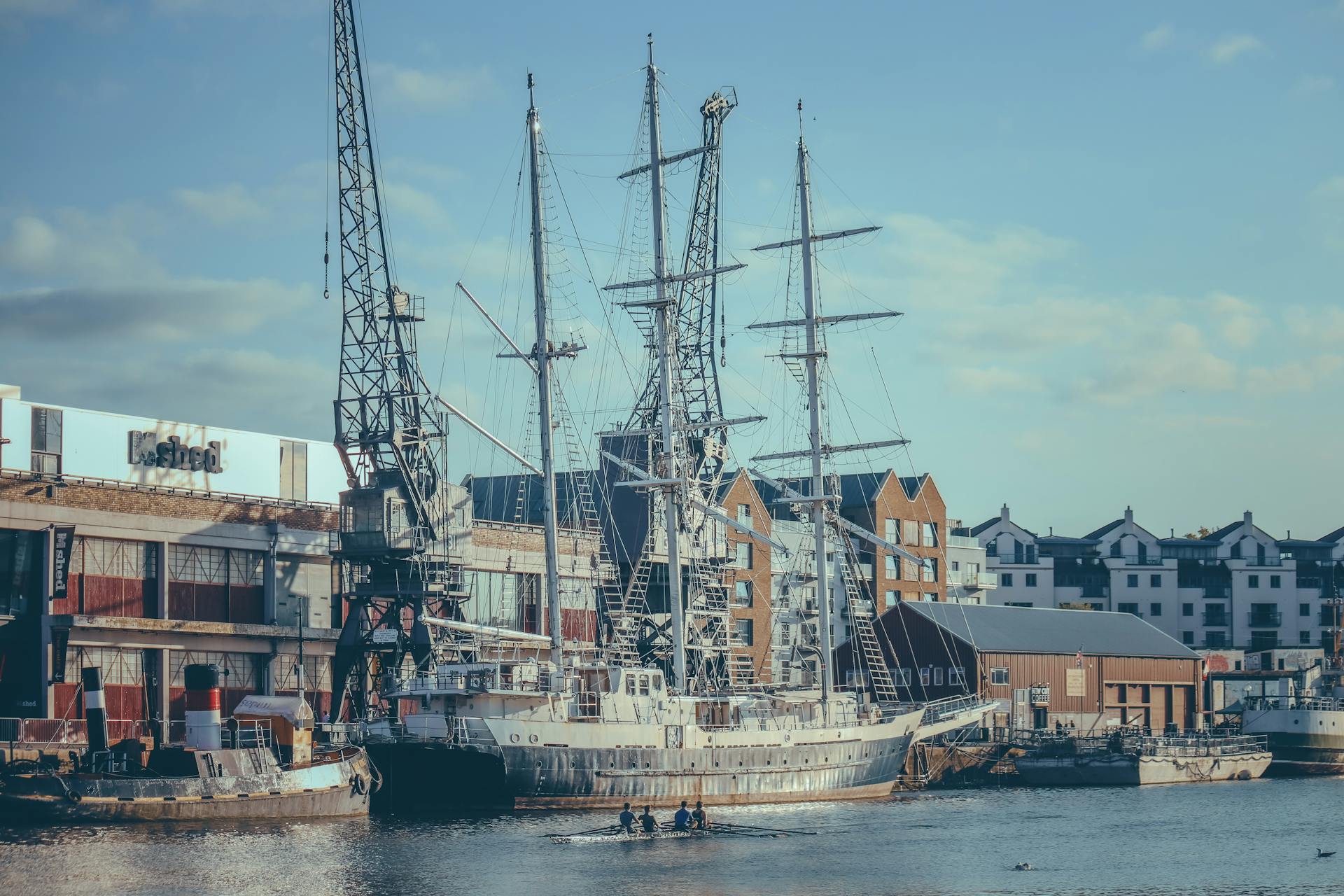
The Postmaster General sent a telegram to Vanderbilt on June 30, 1860, promising presidential pressure on Congress to ensure a contract would be made. But mail was already traveling across country by land by then.
The overland routes were unable to carry bulky matter, which required the service of steamships. The overland service was also forced to close temporarily due to severe storms and hostilities with Native Americans.
The stagecoach service, Butterfield Overland Mail, was established in 1858, carrying mail from San Francisco to Memphis and St. Louis. Stagecoaches made two trips per week, which typically required twenty-two days.
The Pony Express was the first new innovation in transportation to best the speed of the mail lines. It gained a considerable reputation despite its brevity of existence and inability to carry large mail pieces.
The transcontinental telegraph was introduced in 1861, replacing steam lines as carriers of the most urgent pieces of intelligence. It marked a significant shift in the way mail and information were transmitted across the country.
Discover more: United States Maritime Service
PMS Overview
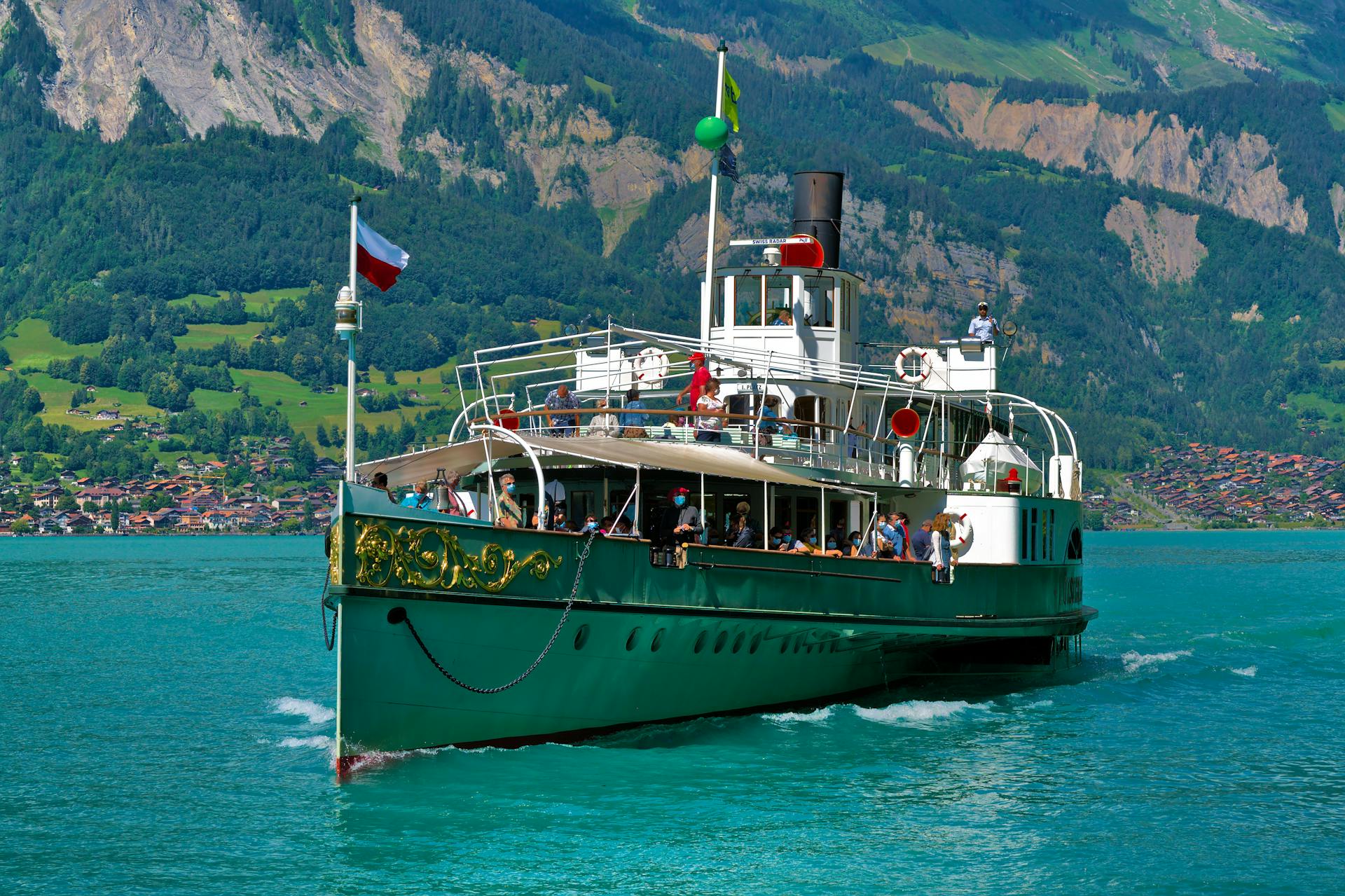
The Pacific Mail Steamship Company was a pioneering force in the development of the United States' west coast.
It was founded in 1848 by Asa and Knapp, two entrepreneurs who recognized the potential for a steamship line to connect the east and west coasts.
The company's early success was largely due to its ability to provide a reliable and efficient transportation service.
The Pacific Mail Steamship Company's fleet grew rapidly, with the addition of new ships and routes over the years.
One of its most notable routes was the one between San Francisco and Panama, which took around 20 days to complete.
For more insights, see: Cruise West
Frequently Asked Questions
What was the flag of the Pacific Mail Steamship Company?
The Pacific Mail Steamship Company flag featured a distinctive swallowtail design with five horizontal stripes in the colors red, white, and blue. Its flag was a recognizable symbol of the company's maritime presence.
What is a steamship company?
A steamship company is a line responsible for operating a fleet of steamships. It's a key player in the maritime industry, connecting people and goods across the globe.
Sources
- https://en.wikipedia.org/wiki/Pacific_Mail_Steamship_Company
- https://oac.cdlib.org/findaid/ark:/13030/tf1j49n4vg/entire_text/
- https://postalmuseum.si.edu/research-article/making-way/falling-tide
- https://onlinebooks.library.upenn.edu/webbin/book/lookupname
- https://ninos.kiddle.co/Pacific_Mail_Steamship_Company
Featured Images: pexels.com


